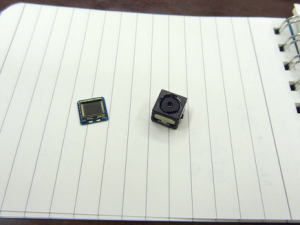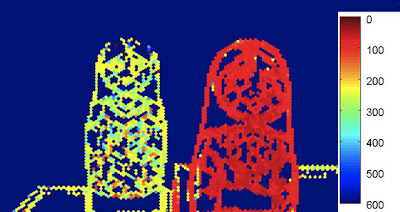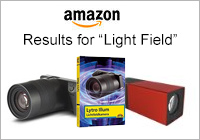Toshiba demoes LightField Sensor for Smartphones, releases more Details
 Following their surprising press release at the turn of the year, Toshiba has now given some more details regarding its new tiny LightField module, which may bring Lytro-like LightField capabilities to Smartphones within a year.
Following their surprising press release at the turn of the year, Toshiba has now given some more details regarding its new tiny LightField module, which may bring Lytro-like LightField capabilities to Smartphones within a year.
The company even showed off a test unit and exciting features at its research lab in Kawasaki, Japan.
IDG News Service reports that the current version of the module, which is scheduled for production “at the end of this year or shortly after”, is a little cube that measures just 8 mm on its sides. Toshiba uses a traditional 8 Megapixel CMOS sensor to create still images with 2 Megapixels effective resolution, as well as LightField video at 30 frames per second (no word specifically about video resolution, though). A future version will use a 13 MP sensor and produce 5 to 6 MP LightField images.
Assuming a square sensor format, the released details (8 MP sensor, 20 pixels per microlens) would add up to an array of about 400,000 microlenses in current setup. In the trade-off between resolution and depth information (and refocusability), Toshiba seems to favour resolution. Keeping in mind that a smaller optical system further reduces depth information, we’re curious to see if the increased number of microlenses can compensate for the other factors.
Lytro-style image refocusing is not the only feature that Toshiba is working on. According to the report, demonstrations included the option to selectively focus on several individuals in a group shot, and separation/extraction of objects from the background:
In demonstrations recorded by Toshiba, the new modules allowed users to easily pick individuals from a group shot on which to focus, a feature that could come in handy for pictures taken in crowded places.
Another demonstration showed it separate a doll photographed in one background and place it in another.
Before the new modules move into production, the company is trying to improve its algorithms for faster, more resource-economical processing (a vital factor for use in smartphones), as well as more precise distance estimation.









3 Responses